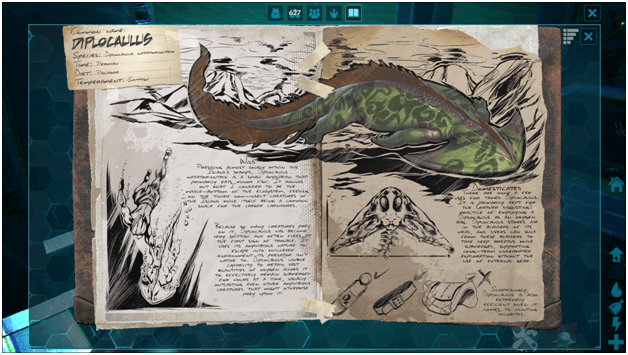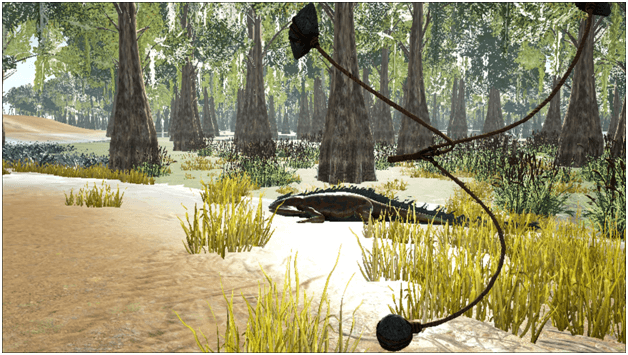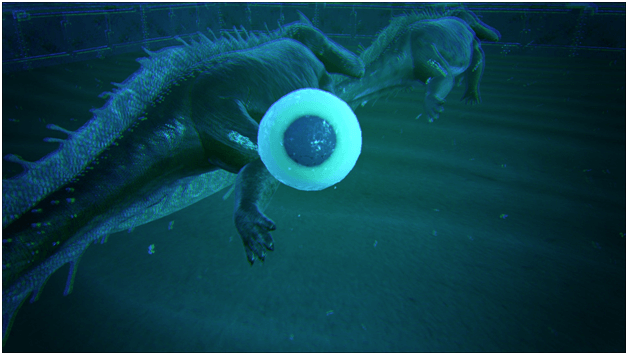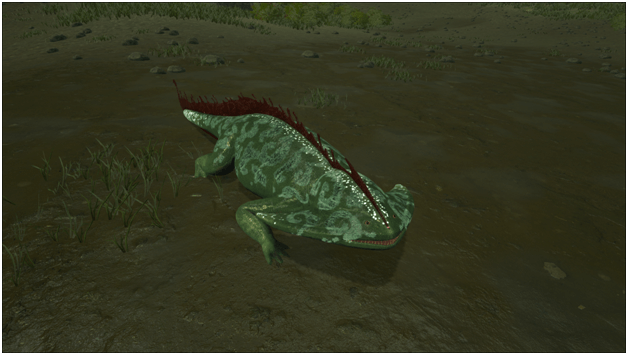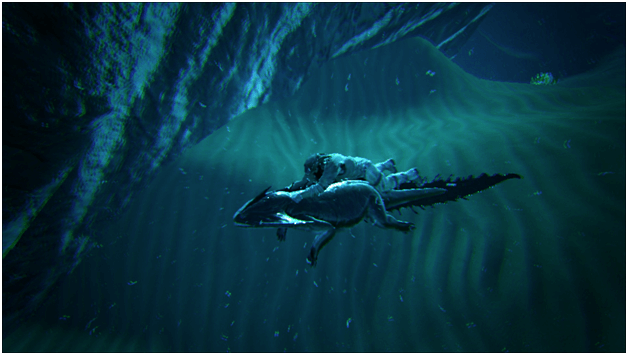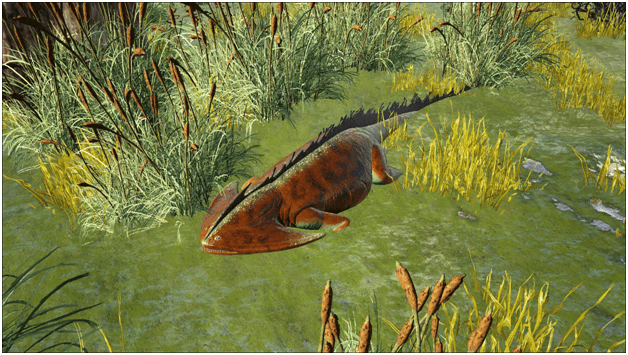
The Diplocaulus Natatorinutix is a skittish piscivore that existed during the Permian period.
This creature is a small amphibious dweller that looks like a lizard with a boomerang shaped head.
In the wild they are usually seen in swampy areas swimming around shallow waters catching small fish to eat.
When these creatures are approached by humans, they are easily alarmed and will try to quickly swim or run away from them.
When tamed by a tribe they are used to help divers to stay underwater for extended periods of time with their ability to store and provide oxygen.
Dossier
Dossier Summary
Usually seen in the shallow parts of the swamp areas, these creatures are considered bottom feeders only eating small fish or tiny insects, making itself easy prey for carnivorous creatures.
Because of the hazardous environment, it has adapted fairly well to be able to go on land or water to escape pursuers and able to hold air in its body to last for long periods of time in the water.
Domesticated Diplocaulus are used like breathing tanks when underwater, sharing air to the diver to let the diver explore deep waters longer as well as being used to hunt trilobites on the ocean floor.
Check Out Our Other Creature Guides
Abilities
Oxygen Tank
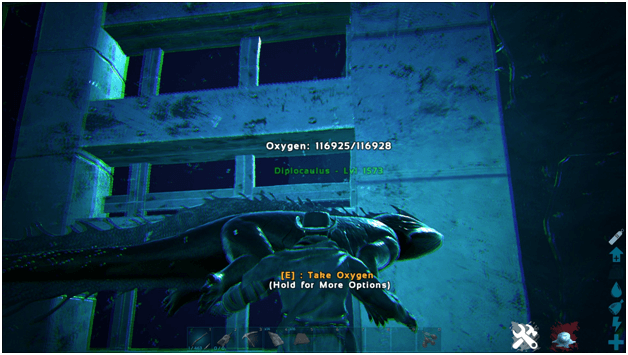
Diplocaulus can be organic oxygen tanks that provide air to their rider, assisting in exploring in deep water exploration.
Uses
Diving Partner
Being able to provide oxygen to its rider, the Diplocaulus is used when exploring deep water when searching for precious resources such as Silica Pearls or Oil Nodes.
Trilobite Hunter
The Diplocaulus deals bonus damage to trilobites allowing it to easily kill them to gain another way for harvesting a small amount of silica pearls and oil.
How to Tame Diplocaulus?
The Diplocaulus can easily be tamed if you sneak up to it and immobilize it with a bola before attempting to knock it out.
It is advisable to use tranquilizing darts as other weapons may deal more damage to it, possibly killing it in the process.
Food
Kibble
- Simple Kibble
Other Food
- Raw Mutton
- Cooked Lamb Chop
- Raw Prime Meat
- Cooked Prime Meat
- Raw Prime Fish Meat
- Raw Meat
- Cooked Prime Fish Meat
- Cooked Meat
- Raw Fish Meat
- Cooked Fish Meat
Saddle
The Diplocaulus does not have a saddle but can be led into the water where the owner can grab onto it like a sea scooter for faster movement in the water.
Breeding
Egg
While in the water, the Male and Female Diplocaulus can mate and lay a Fertilized Diplocaulus Egg in the water like other amphibious creatures.
Drops
Resources Harvested From Diplocaulus Body
- Raw Meat
- Hide
Variants
Aberrant Diplocaulus
The Aberrant Diplocaulus can be found in the Aberration and Valguero maps.
Location
Diplocaulus can be usually found in shallow waters in the swamp areas hunting small fish.
Maps where there are Diplocaulus:
- The Island
- The Center
- Ragnarok
- Extinction
- Valguero
Diplocaulus Spawn Location:
The following are spawn maps where the Diplocaulus can be found
The Island: https://ark.gamepedia.com/Spawn_Map_(The_Island)
The Center: https://ark.gamepedia.com/Spawn_Map_(The_Center)
Ragnarok: https://ark.gamepedia.com/Spawn_Map_(Ragnarok)
Extinction: https://ark.gamepedia.com/Spawn_Map_(Extinction)
Aberrant Diplocaulus Spawn Location: Aberrant Diplocaulus only spawn on the Aberration map.
Aberration: https://ark.gamepedia.com/Spawn_Map_(Aberration)
Overview 
Unlike other dino’s that have multiple uses, the Diplocaulus on the other hand can only do a specific task but do that task very well as not all creatures can provide oxygen underwater.
Sharing its oxygen reserves to its rider can make it safer when diving in deeper waters making the Diplocaulus an essential diving mount as it allows players to stay for longer periods underwater.
While this is not the most aggressive creature you can have and it doesn’t fend for itself that much, you can always use it as the perfect diving buddy when exploring the depths of the ocean.
